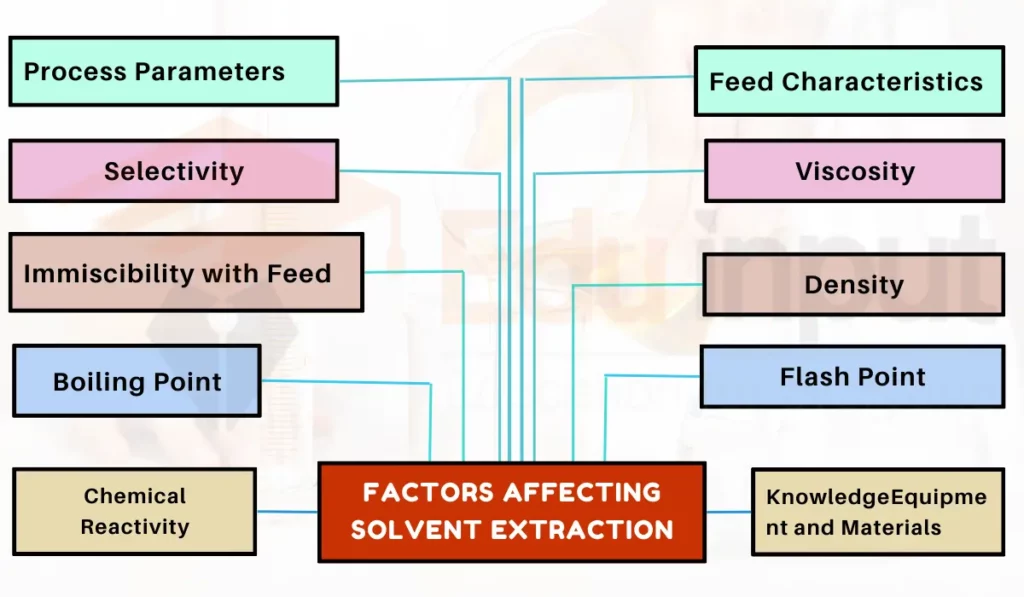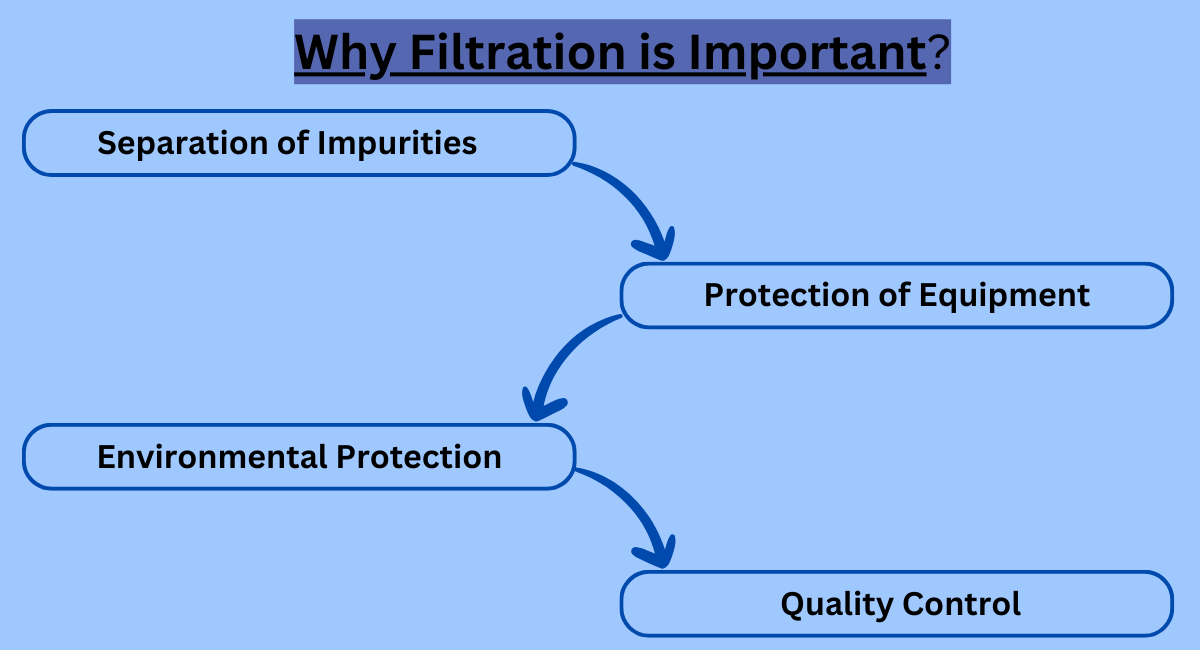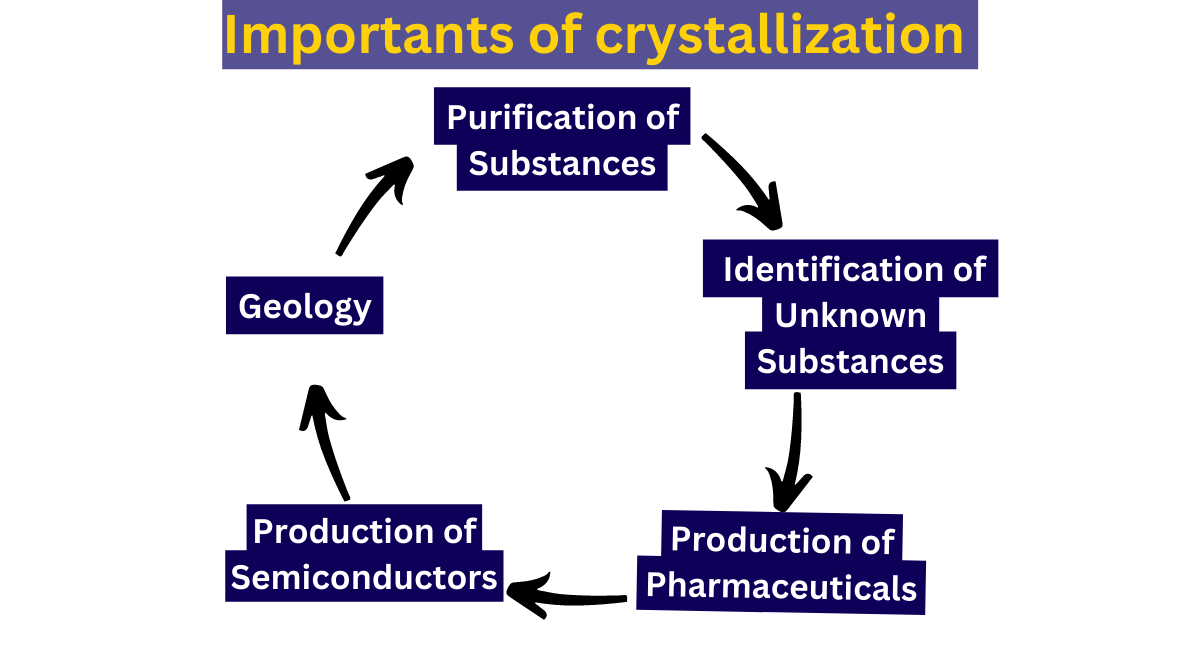18 Factors That Affect Solvent Extraction
The key factors that affect solvent extraction are the properties of the solvent itself like selectivity and viscosity, the characteristics of the feed material such as composition and temperature, process parameters including mixing time and solvent ratio, proper equipment and techniques for separation, as well as environmental considerations regarding greener solvent usage and minimization.

Factors Affecting Solvent Extraction
There are many factors that affect process of solvent extraction, here are the main factors:
1. Solvent Properties
Following solvent propeties affect solvent extraction:
Selectivity
This is the cornerstone of successful extraction. The chosen solvent should preferentially dissolve the target compound over other components in the mixture. High selectivity ensures efficient isolation of the desired compound. Examples include chloroform for caffeine extraction and dichloromethane for lipids.
Immiscibility with Feed
For aqueous mixtures, immiscibility with the feed (often water) is crucial. Distinct layers facilitate easy separation of the extracted compound in the solvent layer. Examples include dichloromethane in aqueous extraction processes and hexane for natural product extraction.
Boiling Point
A solvent with a low boiling point allows for easier post-extraction purification via evaporation, leaving behind the concentrated product. Hexane’s low boiling point helps concentrate essential oils, while ethanol’s stability suits sensitive cannabinoid extraction.
Chemical Reactivity
Inertness under extraction conditions minimizes unwanted reactions with the target compound or other solutes, preserving product purity and quality. Ethanol’s stability with cannabinoids exemplifies this advantage.
Viscosity
Low viscosity facilitates rapid mass transfer between the solvent and feed, improving extraction efficiency. Toluene’s low viscosity benefits large-scale processes like oil extraction.
Density
Appropriate density difference between the solvent and feed phases aids in post-extraction separation. Toluene’s density relative to water in oil sand extraction promotes solvent recovery.
Flash Point
High flash point assures safe operation, especially in industrial settings. Kerosene’s high flash point makes it suitable for supplemental oil extraction.
Toxicity
Environmentally friendly greener solvents, like bio-based limonene with low toxicity and ability to dissolve hydrophobic compounds, are increasingly favored.
2. Feed Characteristics
Feed Characteristics also have impect on process of solvetn extraction:
Particle Size
For solid feeds, smaller particle sizes increase the surface area exposed to the solvent, enhancing mass transfer and extraction efficiency. Grinding before extraction is often employed.
Feed Composition
The presence of interfering compounds with similar solubility to the target can reduce selectivity and extraction efficiency. Pretreatment steps might be necessary for selective extraction.
Feed Temperature
Increased temperature enhances the diffusion rate of solutes into the solvent, but can also lead to undesirable side reactions or degradation of heat-sensitive compounds. Optimal temperature balance is crucial.
3. Process Parameters
Different parameters affect solvent extraction at different levels. Here are the process parameters that can impact solvent extraction process:
Agitation
Proper mixing promotes efficient contact between the solvent and feed, accelerating mass transfer and extraction. Stirring or shaking are commonly used techniques.
Extraction Time
Sufficient contact time allows for equilibrium to be established between the feed and solvent, maximizing extraction yield. However, excessive time can lead to unwanted interactions or solvent loss.
Solvent-to-Feed Ratio
Using an appropriate solvent-to-feed ratio ensures efficient extraction while minimizing solvent usage. Optimizing this ratio is crucial for cost-effectiveness and environmental impact.
4. Equipment and Materials
Choice of Extraction Vessel
The vessel material should be chemically compatible with the solvent and feed to prevent unwanted reactions or contamination. Glass or stainless steel are common choices.
Separation Techniques
Effective separation techniques like gravity settling, decantation, filtration, or centrifugation are essential for isolating the extracted compound from the spent solvent and residual feed.
5. Environmental Considerations
Green Solvents
Choosing solvents with low toxicity, biodegradability, and recyclability minimizes environmental impact. Research into greener alternatives like limonene is actively pursued.
Solvent Minimization
Optimizing process parameters and employing techniques like countercurrent extraction or solvent regeneration can significantly reduce solvent consumption and waste generation.






Leave a Reply